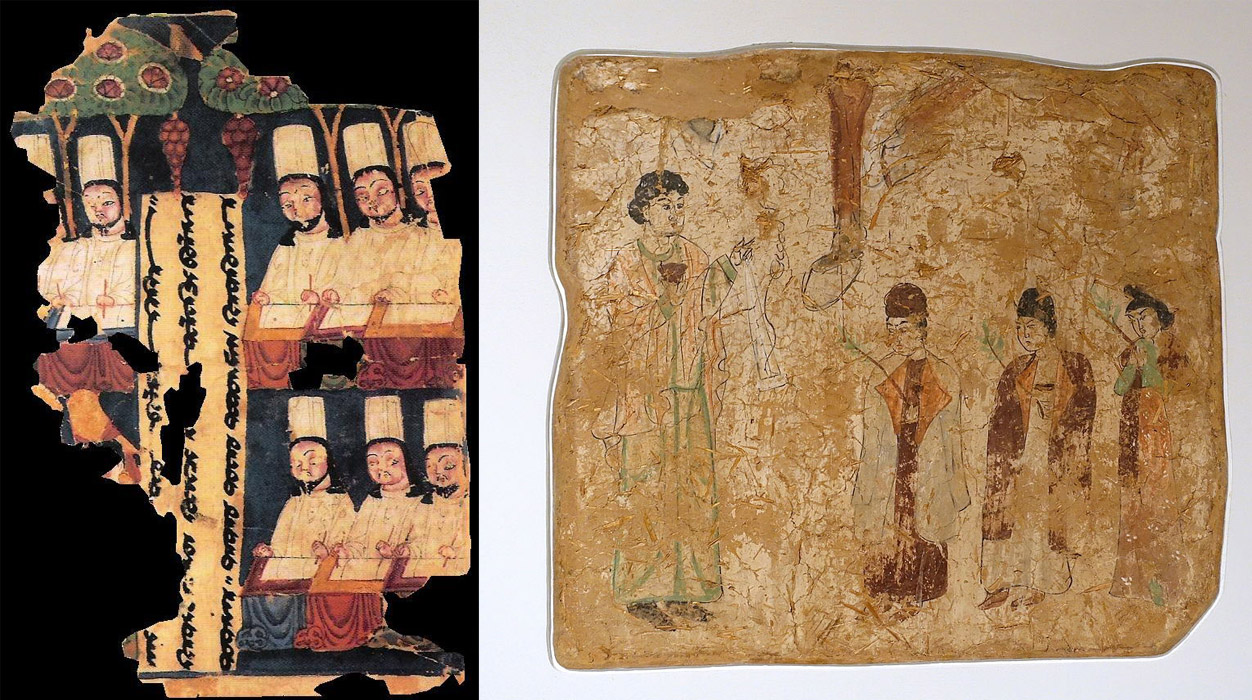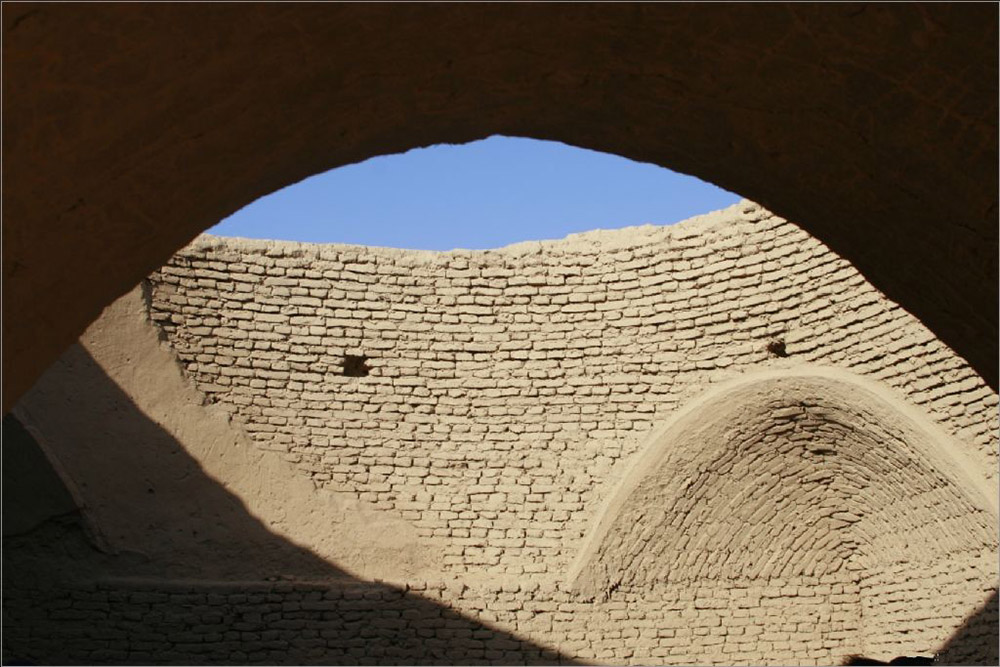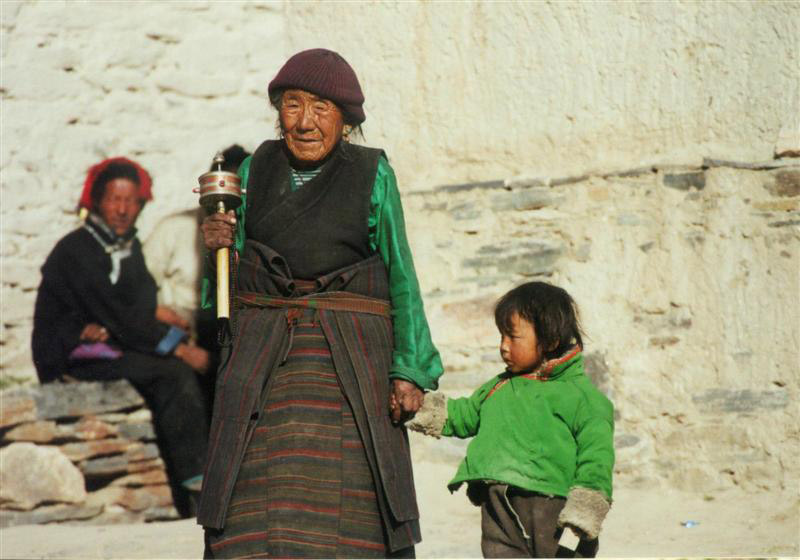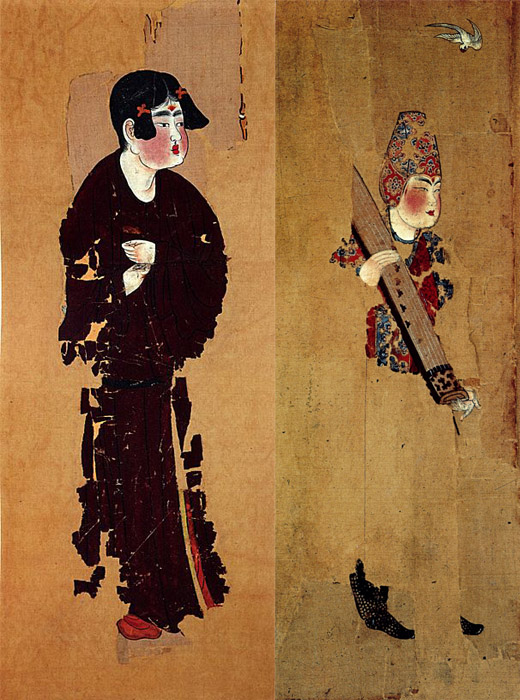Written by: Mahnoor Fatima
Posted on: December 08, 2020 |  | 中文
| 中文
The Houses and Streets of Gaochang
Perhaps in all of China’s history, no other site has intersected the saga of the Silk Road and Chinese regional history, quite like the fortress city of Gaochang. It is difficult to believe that this now-abandoned city was once not only hotly contested by local rulers, but also a thriving hub under the Silk Road. The ruins are located at the foot of the Flaming Mountain, southeast of the city of Turpan in the Xinjiang Autonomous Region. Its name means “the King’s City” (or Kharakhoja) in the Uyghur language, as it once served as the capital of the Gaochang Kingdom (460 – 640 CE).
Gaochang was built during the First Century BC by the Cheshi (Jushi) Kingdom, a group of farmers and warriors. They surrendered control of the city to the Han Dynasty (206 BC – 220 CE), around 50 BC. By that time, it was already a city of plentiful food and water for travelers. However, with the induction of Gaochang to the Silk Road, the city flourished and became a precious resource to the Han court. After being a part of the Gaochang Kingdom for some time, Gaochang returned to Chinese dominion during the Tang Dynasty (618-907 CE). The Uyghur Kingdom took over Gaochang around the 9th Century CE, bringing the area under the control of Genghis Khan, eventually making it a part of the Yuan Dynasty (1271-1368). Gaochang was abandoned in the 13th Century, around the same time as the famous Jiaohe ruins, and the city became deserted.
Despite the constant struggle for Gaochang’s control, there were always multiple ethnicities living there when the city was still populated, including Indians, Central Asians and East Asian people. From the excavations at the Astana Tombs and the Bezeklik Grottos, the early Chinese people who lived in the city believed in a mixture of Gandharan Buddhism and ancient Chinese symbols. At the height of its power, the city was home to 30,000 people, and was seen as one of the more enjoyable stopover towns on the Silk Road. These manmade streets in the middle of the large sandstone desert were once bustling avenues, filled with throngs of merchants selling goods from the east to the west.
Apart from its importance as a trading hub, this city was also an important center of religious teachings, particularly Buddhism. On his way to India, the Buddhist monk Xuanzang stopped at Gaochang to give lectures. But there was also a Confucian college of classics, and a church of Nestorian Christianity (a collection of various Christian teachings) was found on the outskirts of town. With the extended Uyghur empire, Manichaeism made its home in Gaochang, while Islam became the dominant religion of the region in 1390, after spreading in the area through conquerors and mercantile trade.

(L to R) Manichean Priests Writing at Their Table, 8th - 9th Century and A Wall Painting from the Nestorian Christian Church outside Gaochang
Unfortunately for Gaochang, much of the structures were destroyed during the period when it was deserted. The structures, art and murals were destroyed either because keeping idols is seen as repugnant in a Muslim-majority region, or because the structures needed to be used as fertilizer for the farmlands of the surrounding areas. When the site was discovered in the late 19th Century, many of the explorers and archaeologists took artifacts from Gaochang, which are now displayed in various museums of the world.
Although much of the city is in ruins, the site is fascinating to visit, and enough of the structures have remained intact, showing the sheer size of the fortress city. The layout of the city is quite similar to that of Xi’an (or Chang’an) on the opposite end of the country, divided into an outer city, inner-city and central palace city. While the inner wall of the city has crumbled, the outer wall is still in place. The palace-city at the center, which must have been the most magnificent part of the city, now only exist as massive cornerstones scattered around the city center.
As of 2014, Gaochang has gone through extensive renovations, after being declared a Silk Road World Heritage Site by UNESCO. But even as early as 2002, the Chinese government had announced plans to restore parts of Gaochang and the Jiaohe ruins, to be used for tourism purposes. The best times to visit are the months of April to October, while the July – October period has the special charm that it’s also the fruit harvesting season. Whether people are interested in Chinese history, or simply wish to imagine life in a city of the Silk Road, Gaochang is worth a visit.



You may also like: